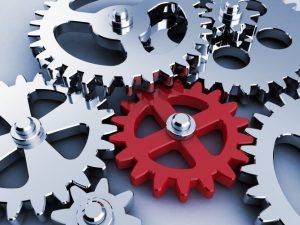Performance Management: Traditional approach challenged by Covid-19
A collaboration between Karlien Kruger: HR practitioner and Mpumelelo Mthembu: Research practitioner
The onset of COVID-19 redefined the world of work. Organisations and teams are now mostly working remotely, providing new challenges in managing individual and organisational performance.
Traditional Approach
Traditionally perceptions about work performance were formed on the physical presence of employees. Employees arriving at work early and leaving late were perceived to be better performers. In the pre-COVID world of work, Managers often articulated this as the reasons to motivate for salary adjustments and incentives for such employees. The perception being that those who spend long hours at work were the better performers.
The Lockdown
During the COVID lockdown many Managers confessed to being frustrated when they were unable to immediately contact employees, when employees did not answer their phones or respond to text messages immediately. The attitude being that employees are supposed to be at work from 8 am to 5 pm and therefore they should be available during those hours and, in some cases, even after hours.

Remote Work
The idea of remote work has long since been discussed, but a clearer need to understand how to manage remote work was forced upon business with the onset of the COVID-19 virus. This leaves the question whether employers now understand that their attitudes towards measuring employees’ performance need to change?

Many an employee and Manager commented that their productivity and performance increased during the lockdown period. When asked why, they noted that they do not loose time travelling to work and from meeting-to-meeting as they are conducting most meetings online, indicating that meetings were more focused and productive.
If 75% of the workday is spent on online meetings, when is the physical work actually done? When asked about this, answers from Managers are vague, indicating once again, that meetings are a gauge of productivity and performance.

Similarly, employees commented that their personal and work lives have now combined into a big blur of activity as they struggle to obtain work-life balance. Whilst employees view the freedom to work independently as an opportunity to take responsibility for their own performance and to produce high quality work in the planned timeframes, they are required to better plan their days, weeks and months.

Thus, it forces us to re-examine how performance is measured, especially since employees are not necessarily physically present. The systems, preparation and planning of business, organisation and individual performance therefore needs to be investigated, together with the impact of various organisational, team and job linkages and interdepencies.
Conclusion
The world of work has changed forever. Managers and employees must change their attitudes towards measuring performance, rising above the traditional perceptions of physical presence as a requirement. It requires of Managers and employees alike to approach the preparation and planning of performance measurement with emotional intelligence and maturity.
Performance Management: Traditional approach challenged by Covid-19 Read More »








